Welcome to Moda!
Foam, Fusible & Layers
Foam, Fusible & Layers
As quilters, garment sewists, bag-makers and stuff-makers, we know about layers. Depending on what we're making, and the finished look we want, we make choices about interfacings, linings, battings and whether to use fusible options.
Interfacings include a wide variety of products for a wide variety of purposes. For garments, they're used to add stiffness to collars and cuffs, to add an extra layer and a bit of stiffness to a waistband, and to strengthen a spot where there might be stress, such as where a button or buttonhole will be stitched. For other projects, interfacings provide structure, shape and a "finished" look.
Types of Interfacing. There are woven, non-woven and knit options for interfacings.
- Woven interfacings have a fabric-like grain and should be cut with the grain going in the same direction as the piece being lined. E.g., If a shirt collar is cut on the crosswise grain of the fabric, the woven interfacing should also be cut on the crosswise grain.
- Non-woven interfacings can be cut in any direction as it doesn't have a grain. It's made when short fibers are fused together. (It's made in much the same way as paper is made - pulp is mashed together and made into sheets.)
- Knit interfacings are a knitted fabric that has a little bit of stretch. It's best used with knit fabrics.
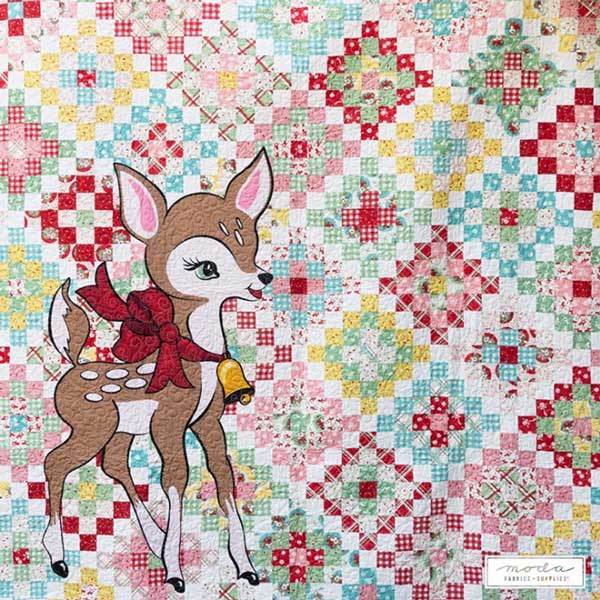
Sew-in and Fusible Interfacing. Fusible interfacings have come a long way since I began making garments. They're softer, the fusible adhesive is better and there are so many more options. Pellon 906F and Pellon SF101 are two of my favorites - both are available in packaged cuts and by-the-yard.
- Pellon 906F is an ultra-lightweight, non-woven, fusible interfacing for sheer and lightweight fabrics. It is 100% polyester, 20" wide, and comes only in White. It is machine-washable and -dryable.
- Pellon SF101 is an all-purpose, woven, fusible interfacing that can be used for garments, as a backing for needlework and punch-needle embroidery. It is 20" wide, 100% cotton and is available in White and Black. It is machine-washable and -dryable.
The quilt above is Deer Christmas by Urban Chiks. (It's available as a Kit and the Deer Panel is sold separately.) The deer is a printed panel that is cut out and machine-appliquéd to the pieced quilt top using a fusible interfacing like Pellon 906F. (Strips of interfacing are cut and fused to the wrong side of the panel on the cutting line. The panel is cut, placed on the pieced quilt and fused in place. The edge is then machine-stitched.)
SF101 and 906F give bags a "professional" touch by providing a little bit of body to the fabric. I use both for the linings of zipper bags, and for the outer layer of simple drawstring bags.
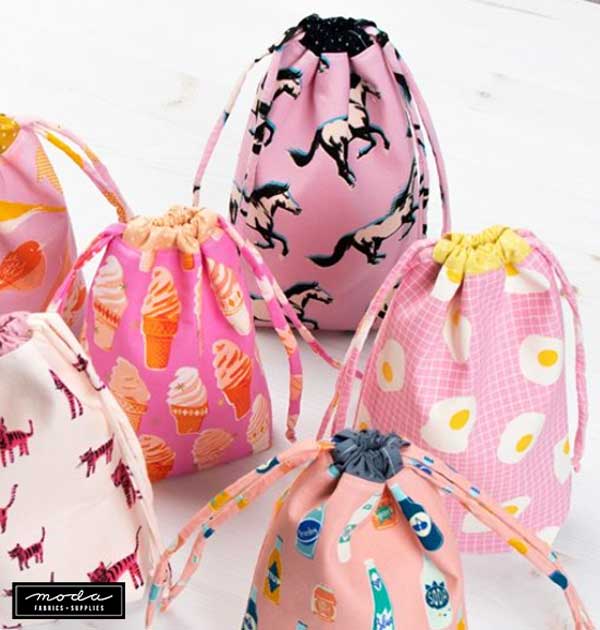
Fabrics by Ruby Star Society.
Do you use pressing sheets? I didn't. But I'm a convert... probably because I've put a too-hot iron on fusible interfacing with predictable, not-so-good results. And "gummed up" my iron and ironing board more than once. Friends say I started using a Goddess Sheet because I loved the name. That too. It's also a really good idea.
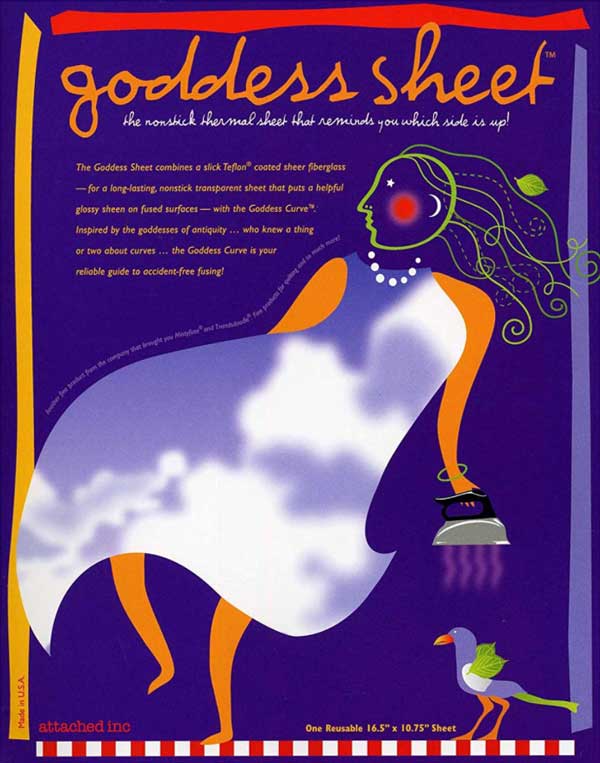
What is it? The folks at Mistyfuse - the makers of The Goddess Sheet - describe it this way: "it's a long-lasting, non-stitch transparent sheet that speeds ironing time and puts a helpful glossy sheen on fused surfaces." It's thermal, Teflon-fiberglass sheet that is designed specfically to remind us - me in particular - which side is up. For quilters, a sweet friend who does a lot of fusible appliqué loves The Goddess Sheet.
The Goddess Sheet is available in several sizes:
- The Goddess Sheet - Original - 10.75" x 16.5
- Big Goddess Sheet - 17.75" x 24"
- Fat Goddess - 21" x 27"
- Grand Goddess Sheet - 24" x 36"
- Holy Cow Goddess Sheet - 36" x 48"
The other fusible that I didn't think I'd use but love is Heat Press Batting. It's not a batting, it's a 1.5" wide cloth "tape" that joins pieces of batting together. Because I'm a skeptic for things like this, I pieced three strips of leftover batting together and used it for the back of a pillow. Let is suffice to say that after quilting, and especially after washing, finding where the batting had been joined wasn't easily done. I use the pieced batting for pillows, pillow backs and bags.
Bag and Moldable Foam and Linings. As it is for regular interfacings, there are so many more options now, from thickness to fusibles. We make choices depending on how we want the finished project to look.
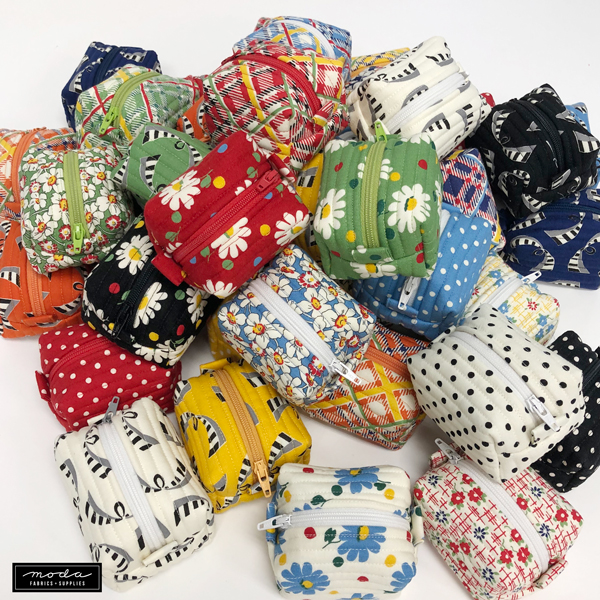
These Bitsy Boxes have a box-like shape because of By Annie's Soft 'n Stable. Other foam linings work nicely but can sometimes have a "harder" fold on a project like this.
Soft 'n Stable also gives the necessary support for bigger bags, especially those with a defined shape and structure like By Annie's Ultimate Travel Bag 2.0.
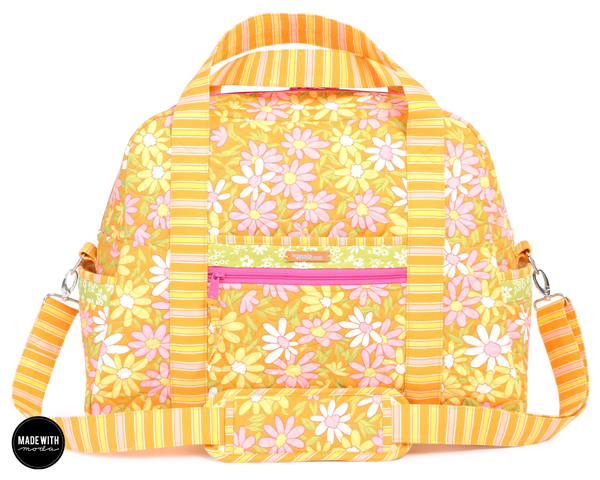
A Blooming Bunch by Maureen McCormick. It's coming in October and yes, we love it too.
The last thing to share today is a giveaway.
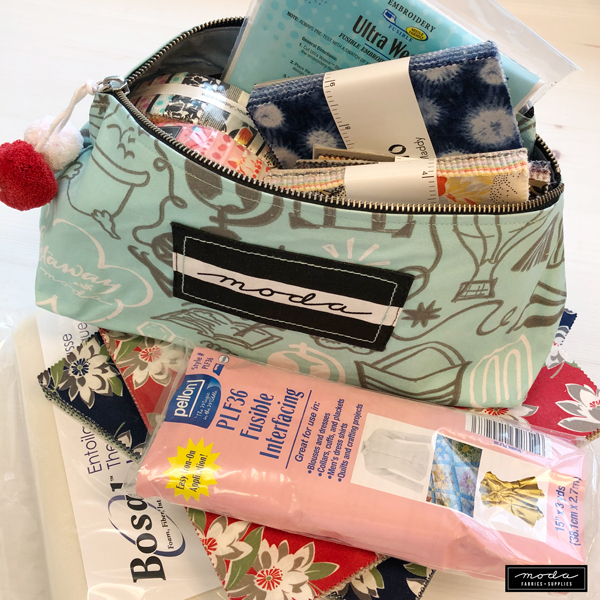
We have a sampling of Pellon products, a Moda zipper bag and an assortment of Designer pre-cuts. Leave a comment by Midnight CST on Sunday, July 12. Simply tell us if you use interfacings and linings, and if you have favorites.
Have a safe, enjoyable Tuesday... maybe make something that makes you happy.

Comments